“Tradition is sloppiness,” Mahler the opera conductor is credited with saying. But in the case of old master John Cox’s long-serving Garsington production of the greatest of operatic comedes, not if it’s refreshed with the subtlest insights in to human tensions and frailties.
This time the house’s brilliant director of Strauss masterpieces, Bruno Ravella, who worked as assistant to Cox at the old Garsington in 2005, has been called in to fine-tune a rather wonderful cast, with relative youthfulness among the leads, and serves up a blissful Mozart evening totally in tune with the environment, perhaps the loveliest of any on the summer opera circuit.
It's actually a rare pleasure to find oneself on the Spanish country estate of Aguasfrescas in the late 18th century, where the two main pairs – Count and Countess Almaviva, the Count's valet Figaro and his bride-to-be Susanna – really do seem to be the ages Beaumarchais imagined them (early twenties at most, even if the singers are quite a bit older than that). 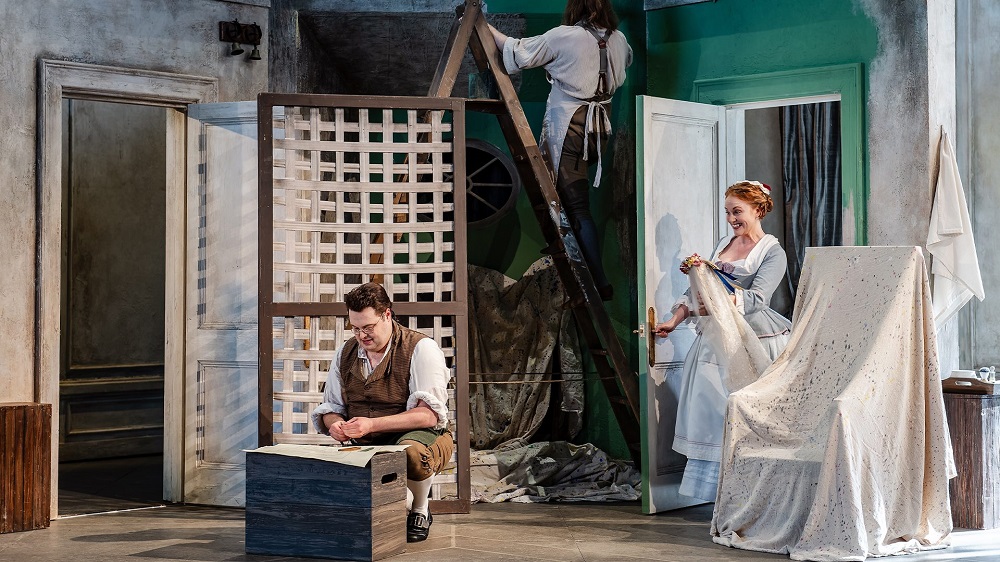 Robert Perdziola's malleable designs start with the tiny room at the heart of the palace where Figaro is working out details of the nuptial chamber and change before our very eyes into the Countess's airy bedroom (David Ireland and Claire Lees pictured above) – the sunlight slanting in from the exquisite Garsington garden helps – as well as a picture gallery of Spanish grandees (oppressively male, of course) and the full space of the onstage garden, informed by just a glimmer of twilight from outside. That's a plus for Garsington, of course, and unlike Brtten's A Midsummer Night's Dream, also revived this season, The Marriage of Figaro begins in daylight and ends at night,
Robert Perdziola's malleable designs start with the tiny room at the heart of the palace where Figaro is working out details of the nuptial chamber and change before our very eyes into the Countess's airy bedroom (David Ireland and Claire Lees pictured above) – the sunlight slanting in from the exquisite Garsington garden helps – as well as a picture gallery of Spanish grandees (oppressively male, of course) and the full space of the onstage garden, informed by just a glimmer of twilight from outside. That's a plus for Garsington, of course, and unlike Brtten's A Midsummer Night's Dream, also revived this season, The Marriage of Figaro begins in daylight and ends at night,
Casting is strong, as always these days at Garsington. The Countess and her maid, more resourceful than the men, give us gold: liquid in the case of Claire Lees's Susanna, looking a bit like a young Julianne Moore, expressive with features everyone in the audience can read, affeecting as she must be in the Act Four serenade when jealous Figaro is watching; highest carat in the case of Samantha Clarke's Countess (pictured below with Lees). 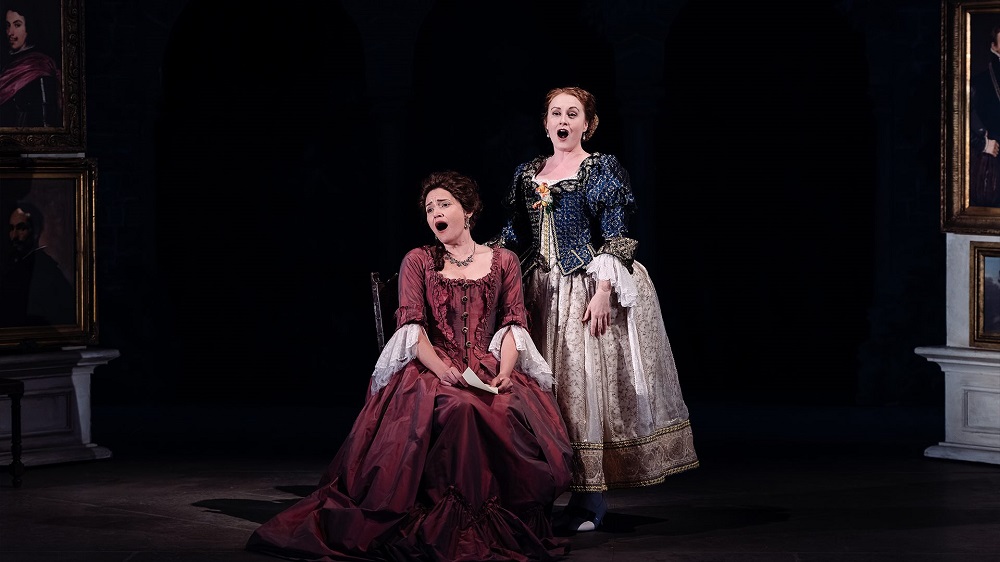 The Australian-British soprano gave us an Anne Trulove ready to be seen on any stage in the world for British Youth Opera back in 2018, won the Guildhall gold medal the following year, was down to sing the Governess in The Turn of the Screw at the Royal Opera's Linbury Theatre, then disappeared during Covid time. Happily she's scored a big success as Australian Opera's Violetta in Sydney, but we need to see more of her here. On this evidence it won't be too long before she graduates to the Marschallin, and maybe other Strauss roles. The creamy sound of "Porgi amor" immediately announced a successor to Kiri te Kanawa and Felicity Lott; "Dove sono" was the showstopper. But Clarke is also a consummate actor, using the eyes and elegant body gestures to perfection. A star, in short, but one that's always part of the ensemble. The recitatives are of course essential, beautifully elaborated at times by Andrew Smith on fortepiano and (few appearances, but always telling) Philharmonia cellst Karen Stephenson.
The Australian-British soprano gave us an Anne Trulove ready to be seen on any stage in the world for British Youth Opera back in 2018, won the Guildhall gold medal the following year, was down to sing the Governess in The Turn of the Screw at the Royal Opera's Linbury Theatre, then disappeared during Covid time. Happily she's scored a big success as Australian Opera's Violetta in Sydney, but we need to see more of her here. On this evidence it won't be too long before she graduates to the Marschallin, and maybe other Strauss roles. The creamy sound of "Porgi amor" immediately announced a successor to Kiri te Kanawa and Felicity Lott; "Dove sono" was the showstopper. But Clarke is also a consummate actor, using the eyes and elegant body gestures to perfection. A star, in short, but one that's always part of the ensemble. The recitatives are of course essential, beautifully elaborated at times by Andrew Smith on fortepiano and (few appearances, but always telling) Philharmonia cellst Karen Stephenson.
Austrian baritone Rafael Fingerlos is a slappable brat of a Count, Cherubino grown up (sort of) but wth bad attitude. Only his vengeance aria fell a bit short, without the necessary threat. David Ireland's Figaro out-lustred his master in the garden; the mock wooing had the most opulent bass-baritone richness, a voice in a thousand. Good if surprising to see Paul Nilon, not so long ago the best of Aschenbach's in Garsington's triumphant Death in Venice, as a focused Don Basilio; the tone is immediately distinctive. Neal Davies and Susan Bickley serve up vintage quality as Bartolo and Marcellina (pictured below), helping to make the Act Three Sextet as funny and moving as it can possibly be. 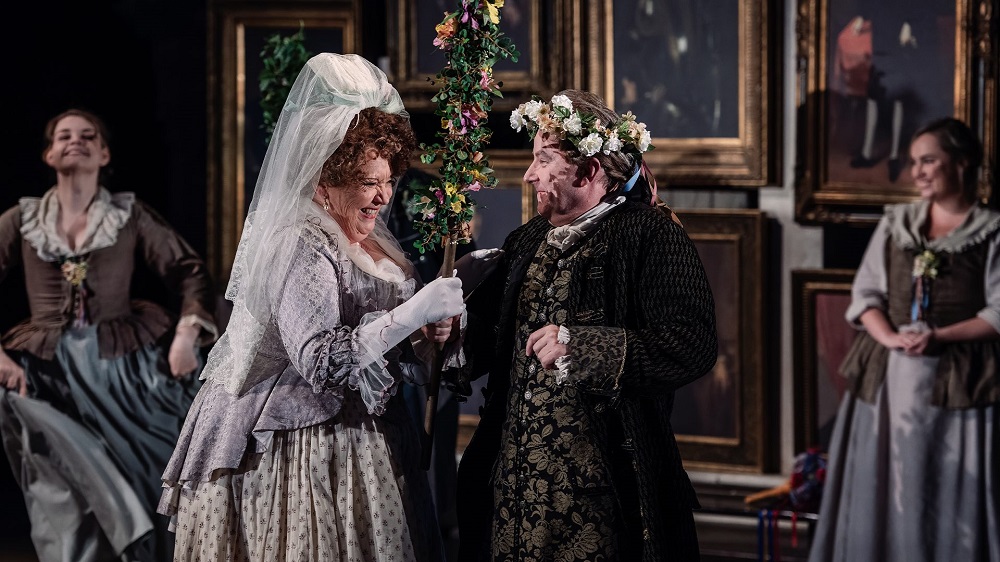 This was one of Norwegian conductor Tabita Berglund's many achievements in orchestral texturing – the glorious Philharmonia getting to play one of the great scores – and pace, not always assured (the Act Two finale could have ended with more fizz, and the Overture seemed careful and handsome rather than vivacious). But those moments where Mozart steps out of lively comedy into the transcendental could still be moving to tears: the opening of "Voi che sapete", fulfilled by Bethany Horak-Hallett's poised and lustrous Cherubino, above all the duet-serenade to the breezes, Clarke and Lees matching to rare perfection. Colours from the pt always made ther mark, especally the period-instrument trumpets at the end of "Non più andrai".
This was one of Norwegian conductor Tabita Berglund's many achievements in orchestral texturing – the glorious Philharmonia getting to play one of the great scores – and pace, not always assured (the Act Two finale could have ended with more fizz, and the Overture seemed careful and handsome rather than vivacious). But those moments where Mozart steps out of lively comedy into the transcendental could still be moving to tears: the opening of "Voi che sapete", fulfilled by Bethany Horak-Hallett's poised and lustrous Cherubino, above all the duet-serenade to the breezes, Clarke and Lees matching to rare perfection. Colours from the pt always made ther mark, especally the period-instrument trumpets at the end of "Non più andrai".
Berglund also made us aware of Mozart's special filigree even in numbers like the Act Three chorus, continuing the sublimity. Excellent delivery here from the youthful girls, and their gestures in revealing contempt for their lecher-master enriched both their scenes. If you're unfamilar wth the ethos of country-house opera, and worried about splashng out on something you might not enjoy, this is the one to see: everything in perfect harmony.

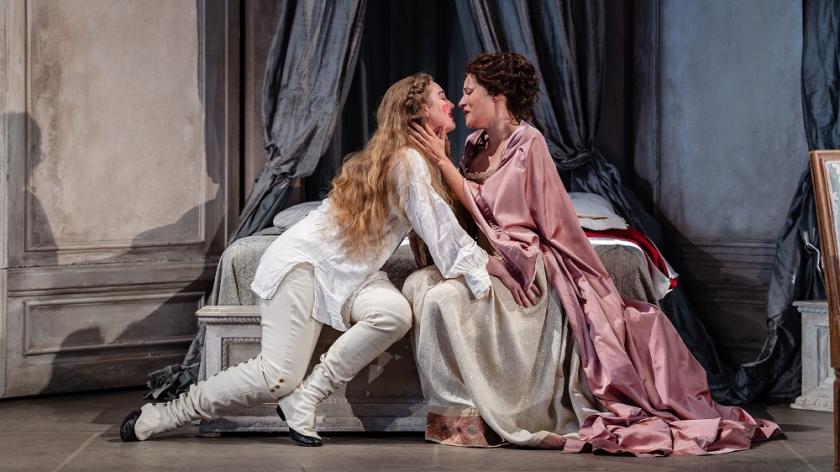

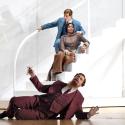
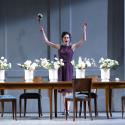










Add comment